Tom's Guide Verdict
The Hisense U8QG is a high-performing TV with plenty of value. It offers best-in-class brightness with tons of gaming features and A/V-related enhancements. It’s not an OLED rival, but it’s a value performer that competes with high-end models from Samsung and LG.
Pros
- +
Incredible sound system
- +
Excellent gaming features
- +
ATSC 3.0
- +
Immense brightness
Cons
- -
Tons of blooming
- -
Poor glare mitigation
- -
Only 3 HDMI ports
Why you can trust Tom's Guide
The Hisense U8QG Mini-LED TV takes the top spot in Hisense’s 2025 TV lineup and comes in to replace last year’s Hisense U8N, Tom’s Guide’s QLED TV of the Year in 2024.
Feature-rich, spec-ridden, and kitted with tons of brightness, the U8QG has a lot in store for would-be TV buyers, but can we confidently say it’s one of the best TVs like its predecessor?
While there’s lots to love — brightness, gaming, and audio performances are top-notch — its specs don’t tell the full story: It lacks the improved anti-glare coating found in major competitors, and it still suffers from issues common to Mini-LED TVs, like blooming and mediocre off-axis viewing.
At its launch price of $1,499 (now down to just $999 at the time of writing) for a reasonably sized 55-inch TV, this premium Hisense screen walks a fine line between keeping costs low and delivering big-budget thrills, and it mostly succeeds.
Hisense U8QG Mini-LED TV review: Price and release date
The U8QG sits near the top of Hisense’s 2025 Mini-LED TV lineup, just below the Hisense U9QG. It starts at $1,499 for a 55-inch model, but you can buy that configuration right now for around $999. We reviewed the 65-inch version, which is currently on sale for about $1,399.
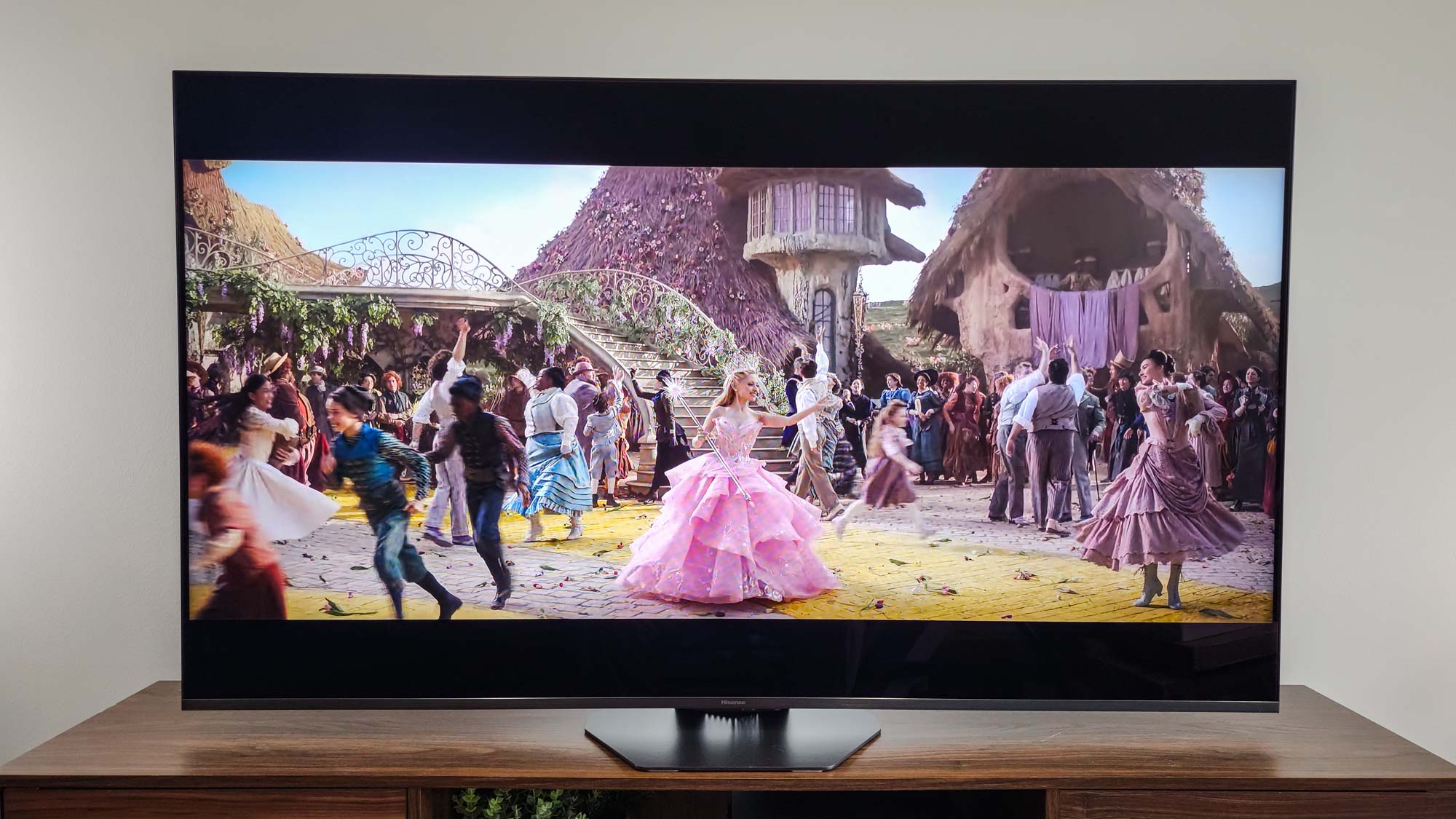
Like last year’s Hisense U8N, we’re expecting a pretty sizable difference in performance between the various sizes. We measured the peak brightness output of the 65-inch model to be around 4,000 nits, but the 55-inch version will likely top out around half that amount.
Conversely, larger screen sizes — like the 75-inch and 85-inch models — will have more contrast control zones and might suffer from less blooming than the 65-inch screen we tested. In short, there’s going to be some performance variation between the different models, but specs and supported features are all otherwise the same.
Get instant access to breaking news, the hottest reviews, great deals and helpful tips.
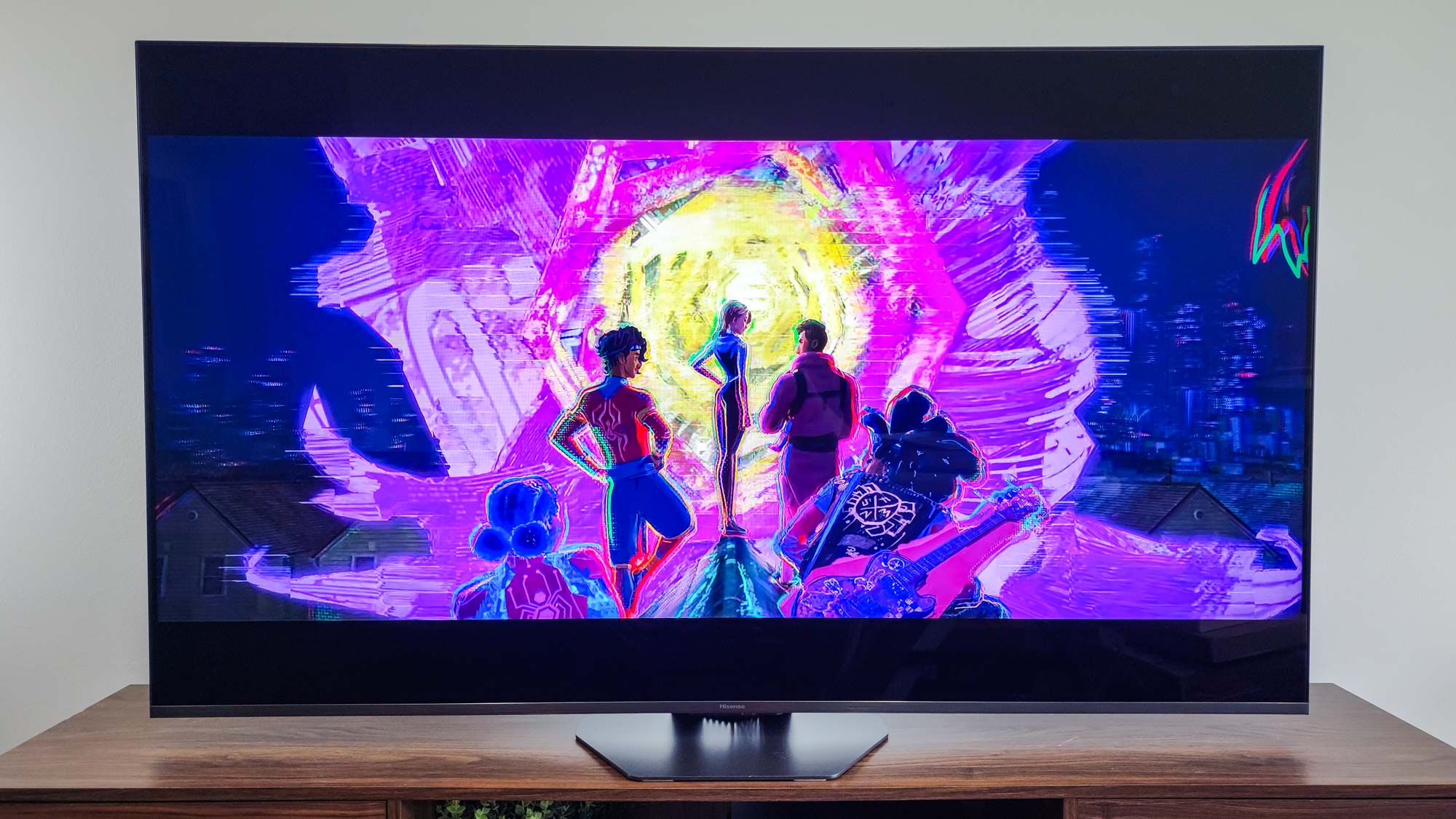
- Hisense 55U8QG (55-inch): $1,499 | Sale: $999
- Hisense 65U8QG (65-inch): $1,999 | Sale: $1,399
- Hisense 75U8QG (75-inch): $2,499 | Sale:$1,899
- Hisense 85U8QG (85-inch): $2,699 | Sale: $2,499
- Hisense 100U8QG (100-inch): $5,799 | Sale: $4,999
The U8QG’s discounted pricing puts it in line with other major Mini-LED rivals like the TCL QM7K, however against competing TVs from other major brands, the U8QG is cheaper than most. Take the Samsung QN80F, for instance, that’s $1,699 for the 65-inch version. The 65-inch Hisense U8QG is already $300 cheaper and that price gap will likely increase as the year goes on.
Hisense U8QG Mini-LED TV review: Design & remote
In terms of overall aesthetics, the U8QG isn’t very slim. In fact, unlike some high-end Mini-LED TVs, its 45mm-thick panel is comparatively bulky, owing largely to its beefy audio system. Fortunately, its bezels aren’t too pronounced, aside from the bottom bezel.
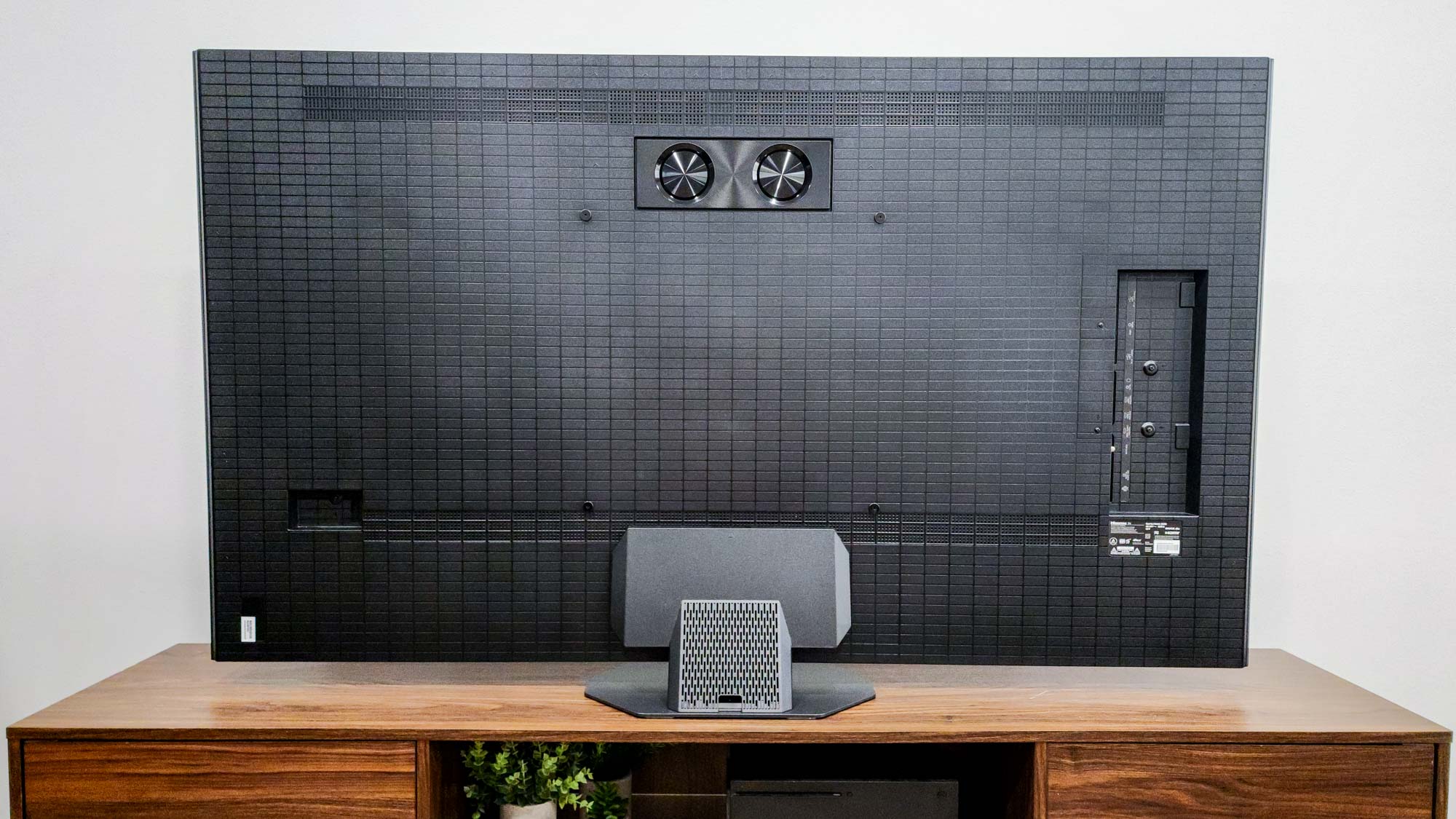
The 65-inch U8QG comes with a pedestal-style stand that is pretty simple to put together. The stand is sturdy, making it more than adequate to hold the TV in place. For safety’s sake, however, I recommend having at least two people on hand to set up the TV, but it’s a quick process.
All sizes in the series use the same stand design except for the 100-inch version, which uses a pair of wide-set feet.
If the stand isn’t for you, you can always go with a wall mount instead. The U8QG comes equipped with a 400 x 400 VESA mounting interface.
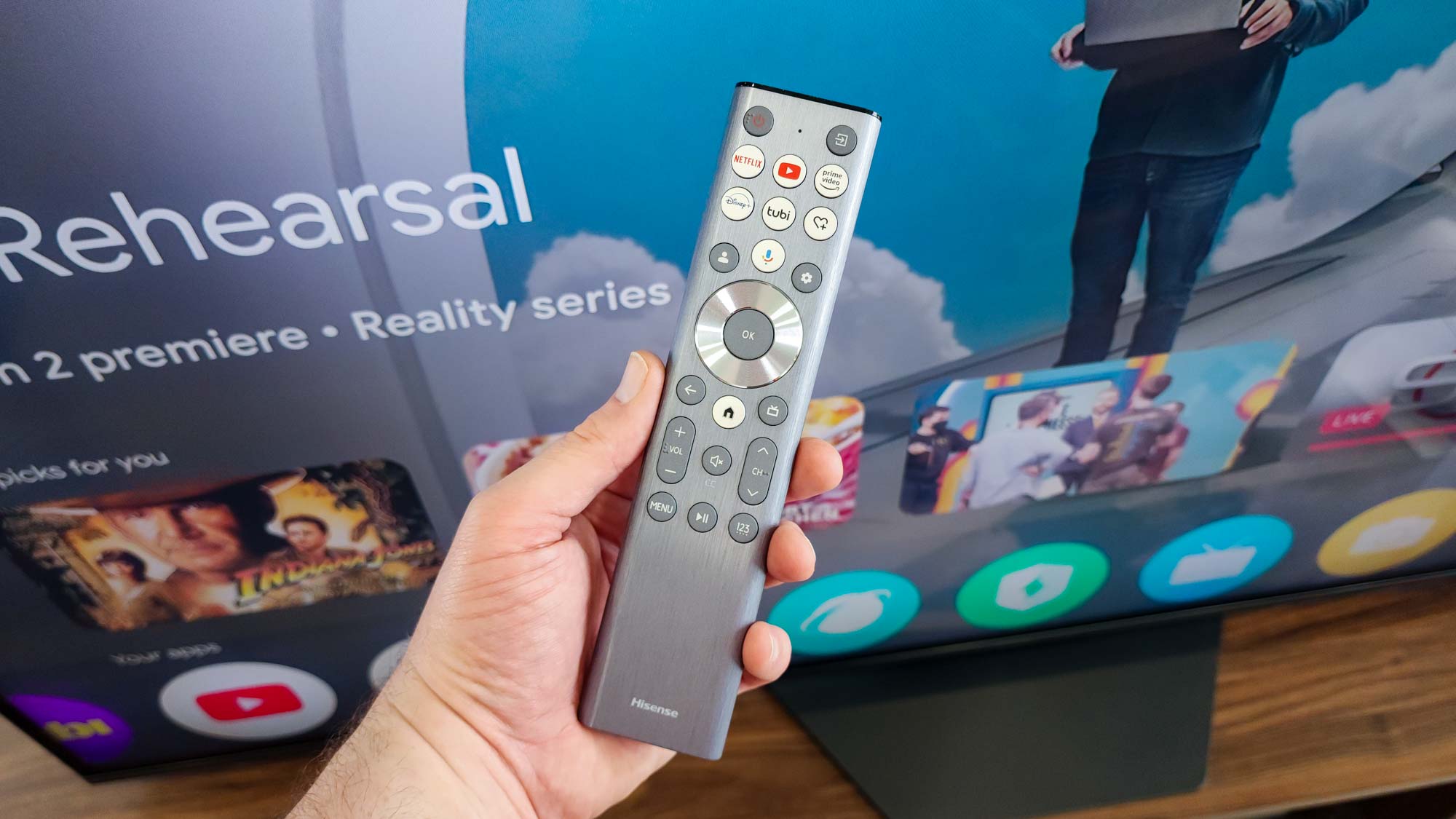
Finally, Hisense’s remote is more or less the same as the one found with the Hisense U8N. The silver-toned remote is still conveniently backlit and comfortably slim, but its elongated design could stand to be shortened.
Hisense U8QG Mini-LED TV review: Ports
The Hisense U8QG offers just three HDMI ports instead of four, which goes against the standard for almost all TVs in its class. Fortunately, all three are HDMI 2.1-compatible, which should satisfy most hardcore gamers.
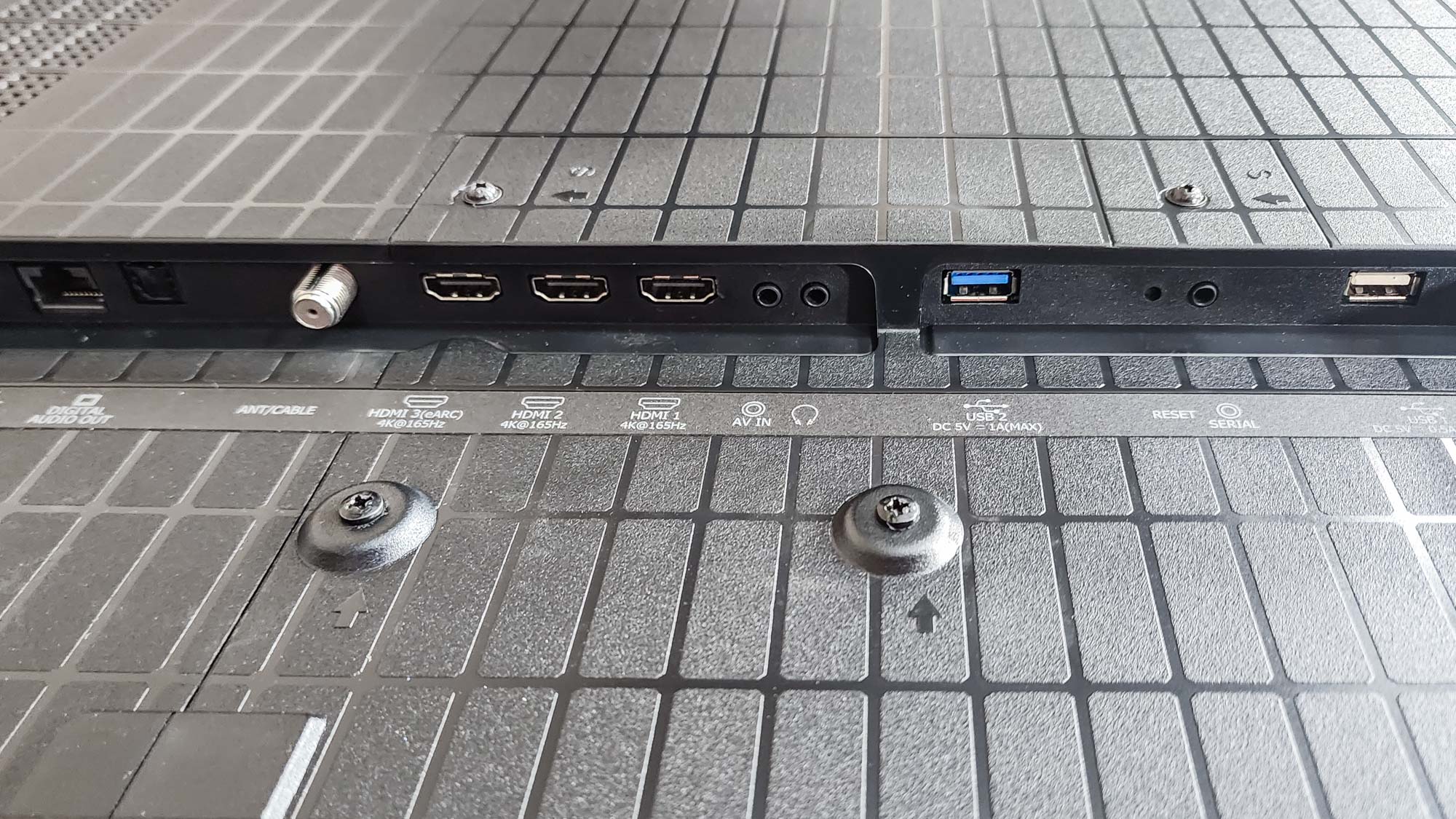
The true kicker is the addition of a USB-C video port that doubles as a fast charger. You don’t often see this design on a TV, as it’s more often found on gaming monitors. That being said, because it comes at the expense of a fourth HDMI port, I’m not sure it was a good trade.
Rounding things out are one USB 2.0 and one USB 3.0 input, an Ethernet port, optical output and a 3.5mm audio jack. A cable/antenna can also be found here, netting you access to NextGen TV and 4K broadcasts thanks to its ATSC 3.0 tuner.
Hisense U8QG Mini-LED TV review: Performance
I put the Hisense U8QG through its paces with a variety of content, including shows like “Reacher,” “Andor” and “Lazarus,” as well as movies like “Barbarian.” I also watched a few DVDs to test its upscaling, like “Ghost in the Shell” in 4K and “Tenet” in standard Blu-ray.
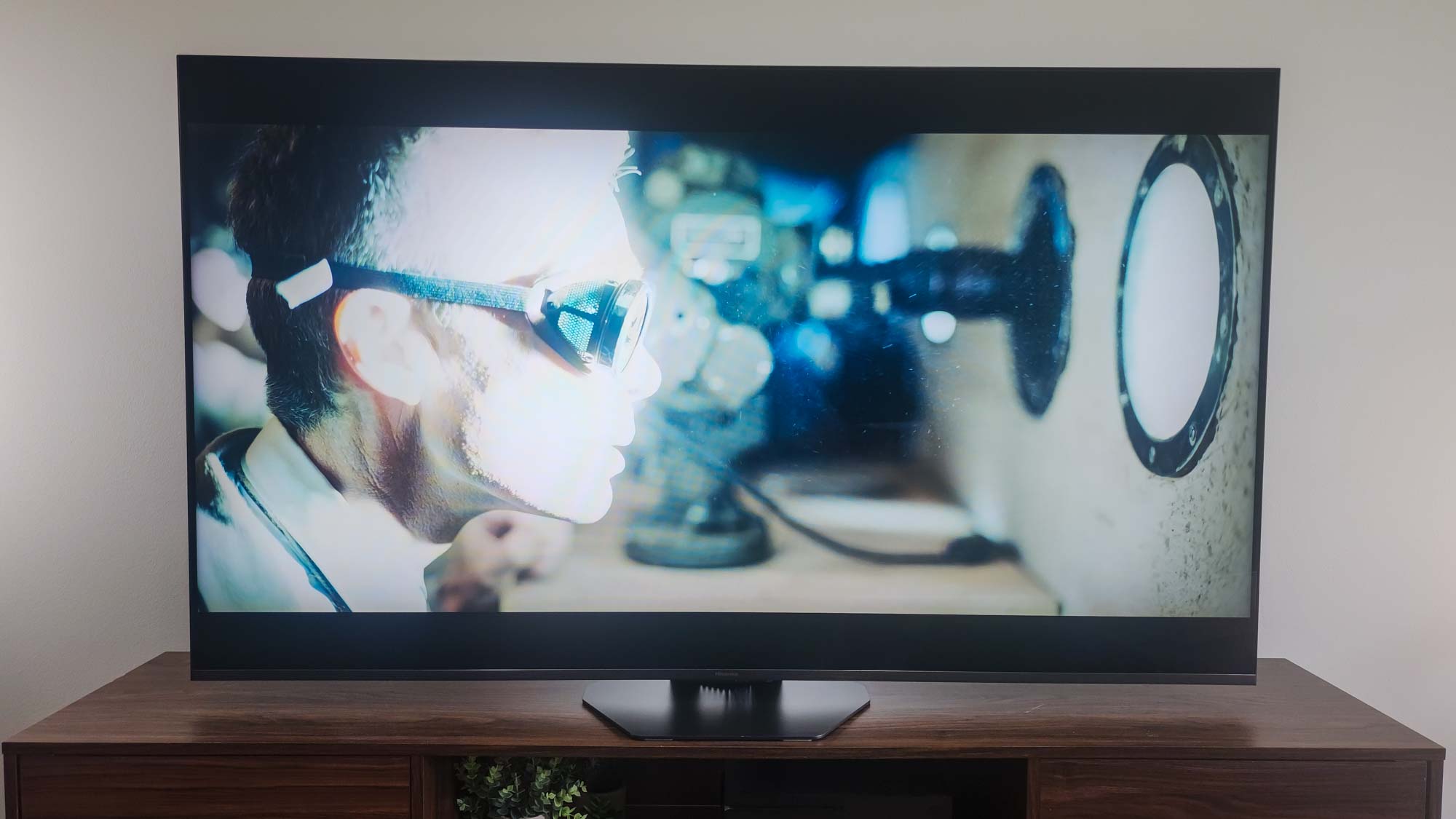
High contrast is the U8QG’s strong suit. Typically, Mini-LED TVs tend to struggle with darker scenes, but the U8QG was a standout performer. “Barbarian” and the third season of “Reacher” popped on the screen, with shadows looking especially detailed. Similarly, its higher brightness specs, hitting a high of 2,908 nits in SDR, is to be praised as well.
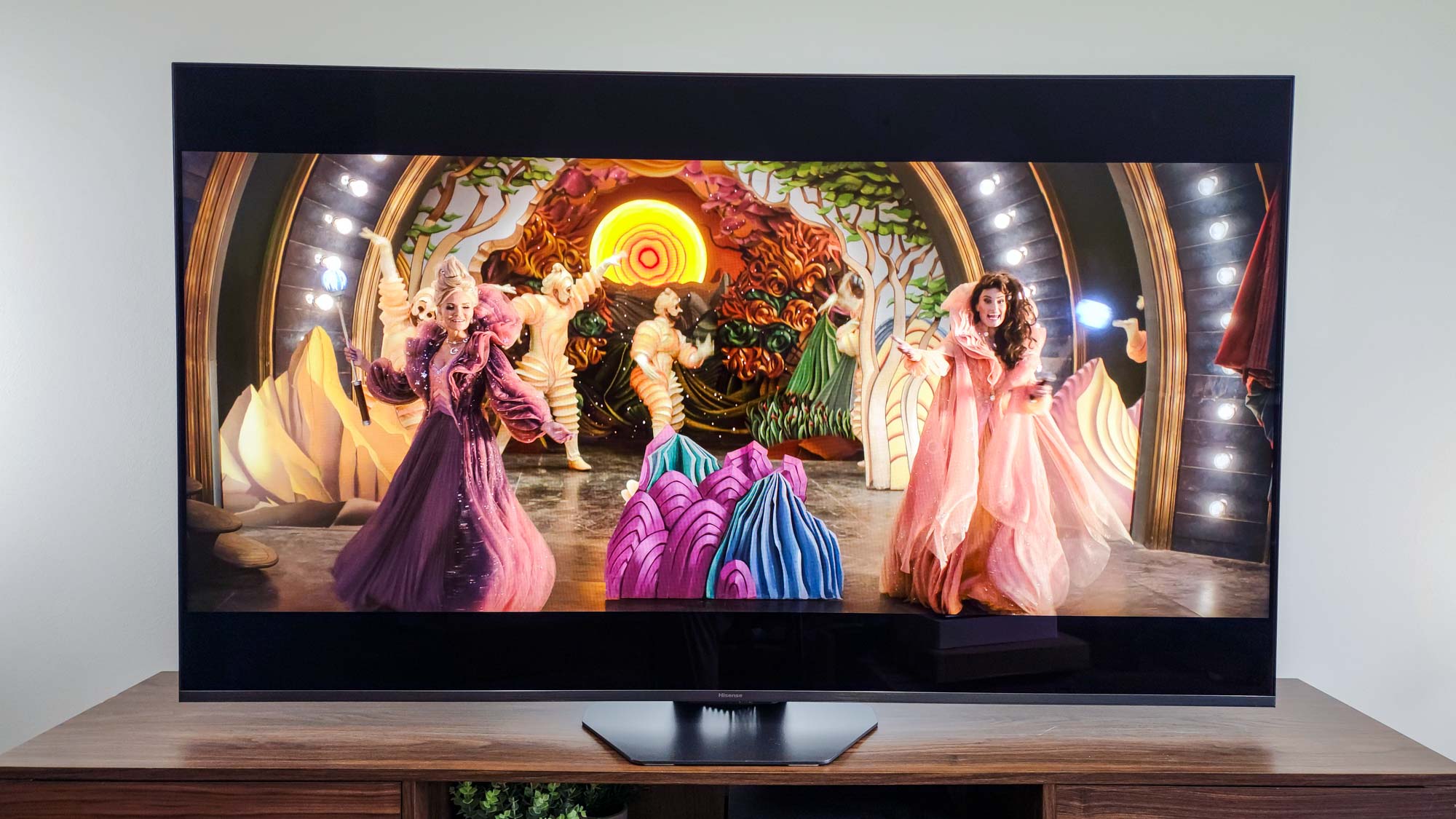
I also have to give Hisense some credit for an absurd color volume and accuracy on the U8QG. You can see it working its magic in sharper daylight scenes, with accurate skin tones and crisp highlights on surfaces, like rolling hills and crashing waves. Colors truly stuck out in animated content, like “Lazarus,” which is filled with sweeping shots of a futuristic cityscape.
All Mini-LED TVs exhibit some degree of haloing (a soft glow around bright objects on a dark background), but the best Mini-LED TVs keep haloing to a minimum. For the most part, the U8QG does a decent job of managing haloing and light bloom, even during dark scenes with subtitles. I could see some haloing during space sequences in “Andor,” but it didn’t ruin the experience and thankfully, it was only distracting in menus and outside of content.
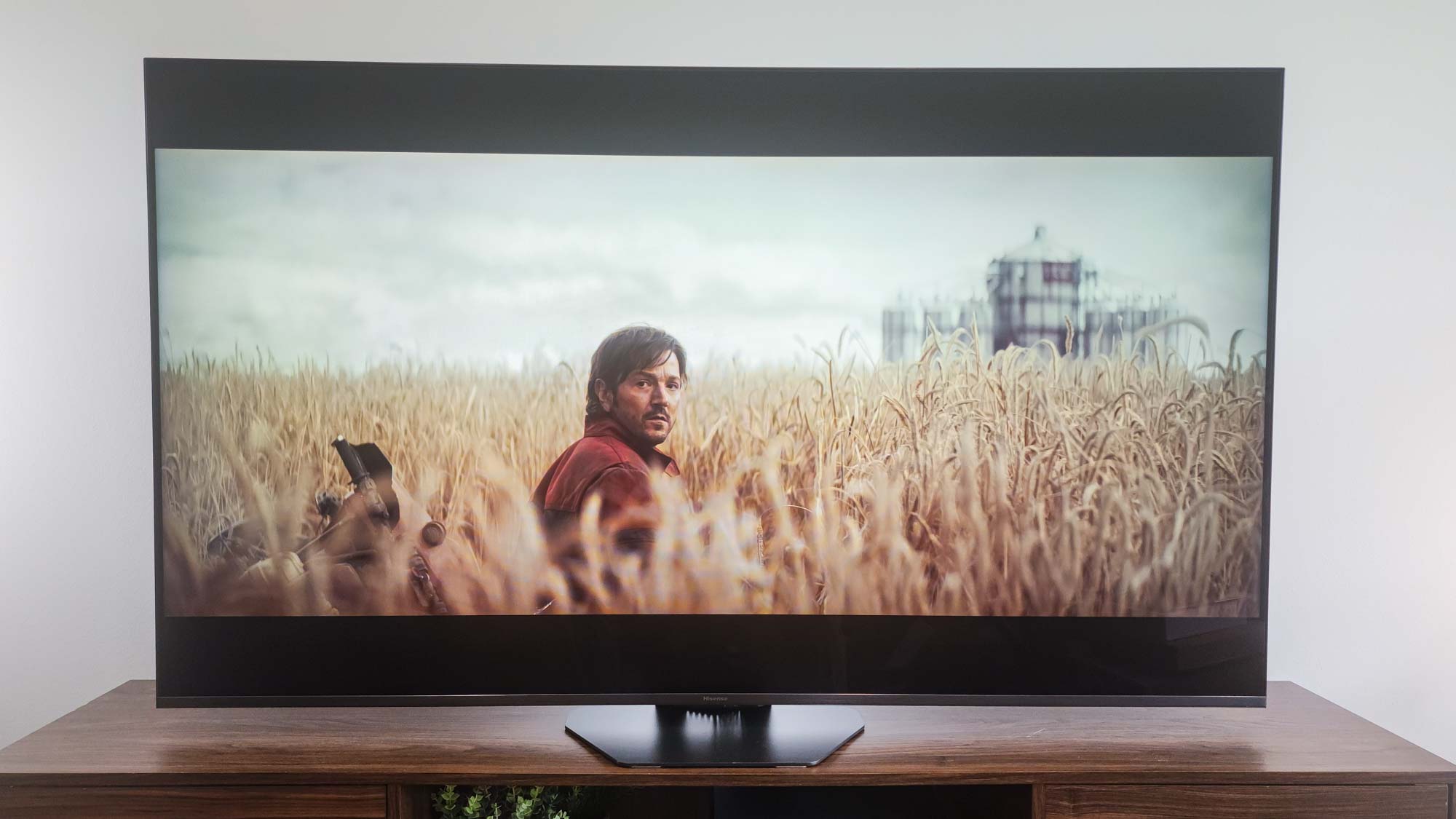
Unfortunately, despite the TV’s incredible brightness, you’ll probably have to contend with glare problems if you install the U8QG up against bright light sources. It handles conventional lights a lot better than it does daylight, but glare is still going to cause problems.
Hisense U8QG Mini-LED TV review: How we test
We follow a standard testing protocol for every TV we review at Tom’s Guide. Our benchmarks include a series of technical and subject tests designed to rate the set’s performance. For our technical tests, we use a Jeti spectraval 1501-HiRes spectroradiometer, a Klein K10-A colorimeter, a Murideo 8K-SIX-G Metal pattern generator, and Portrait Displays’ Calman TV-calibration software to take measurements. We also use a Leo Bodnar 4K Input Lag Tester for determining the TV’s gaming prowess.
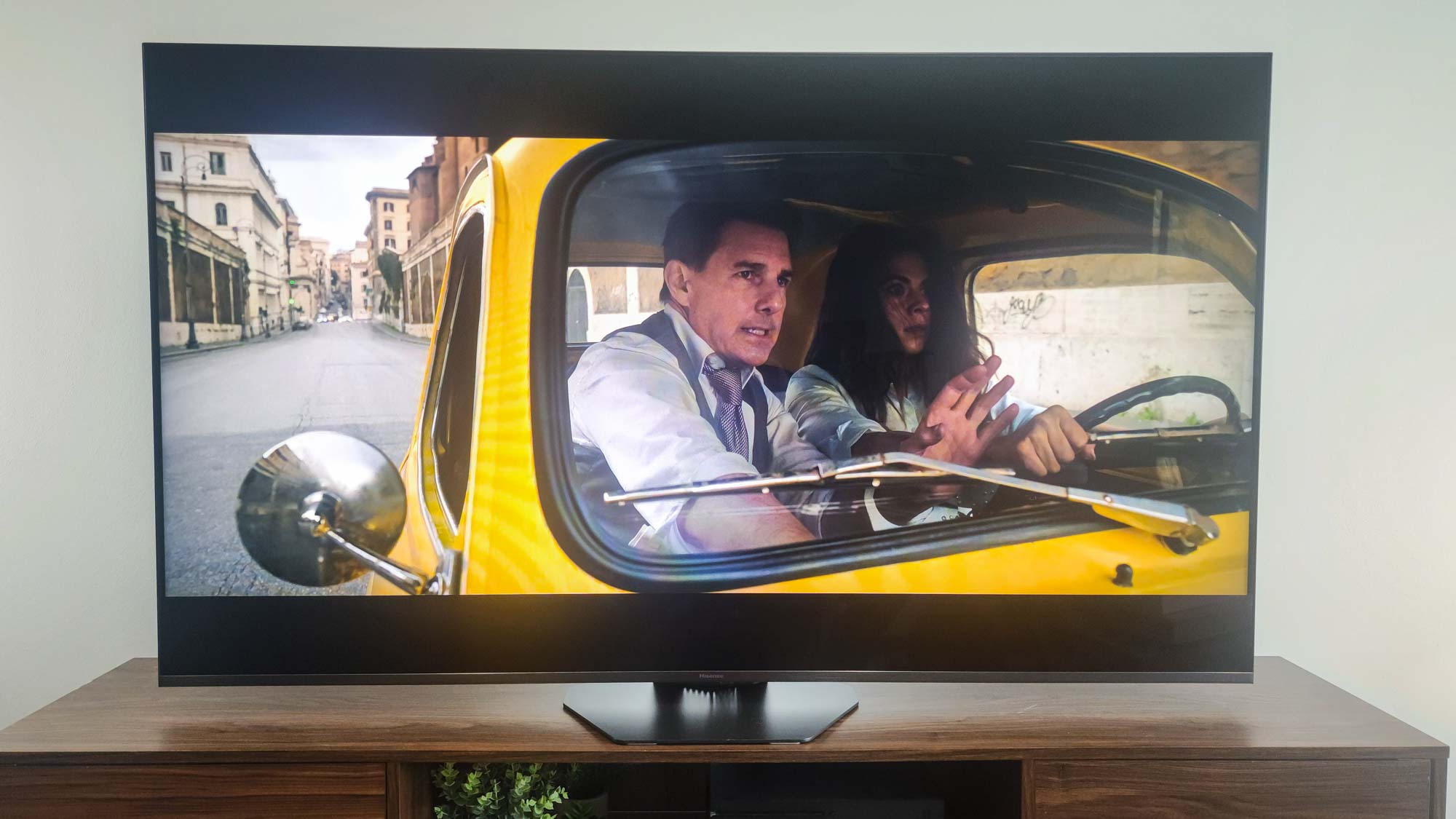
Subjective tests vary based on the reviewer, but usually feature anecdotes from a diverse selection of movies, TV shows, and other content reflecting the types of things you may actually want to watch on the TV.
Hisense U8QG Mini-LED TV review: Test results
Let’s compare the Hisense U8QG to similarly-priced Mini-LED TVs, including the TCL QM7K, Sony Bravia 7 and Samsung QN80F. (Note that the Bravia 7 launched last year, but is still being sold in 2025.)
| Row 0 - Cell 0 | Hisense U8QG | Samsung QN80F | TCL QM7K | Sony Bravia 7 |
SDR Brightness (10%, in nits) | 2,908 | 972 | 1,991 | 1,817 |
Delta-E (lower is better) | 2.4 | 2.8 | 1.4 | 1.6 |
Rec. 709 Gamut Coverage | 99.30% | 99.62% | 99.18% | 99.62% |
HDR Brightness (10%, in nits) | 3,916 | 992 | 1,734 | 1,507 |
UHDA-P3 Gamut Coverage | 97.53% | 94.68% | 96.98% | 97.09% |
Rec. 2020 Gamut Coverage | 83.98% | 74.46% | 79.22% | 78.61% |
Input latency (in milliseconds) | 9.7ms | 9.8ms | 13.1ms | 17.1ms |
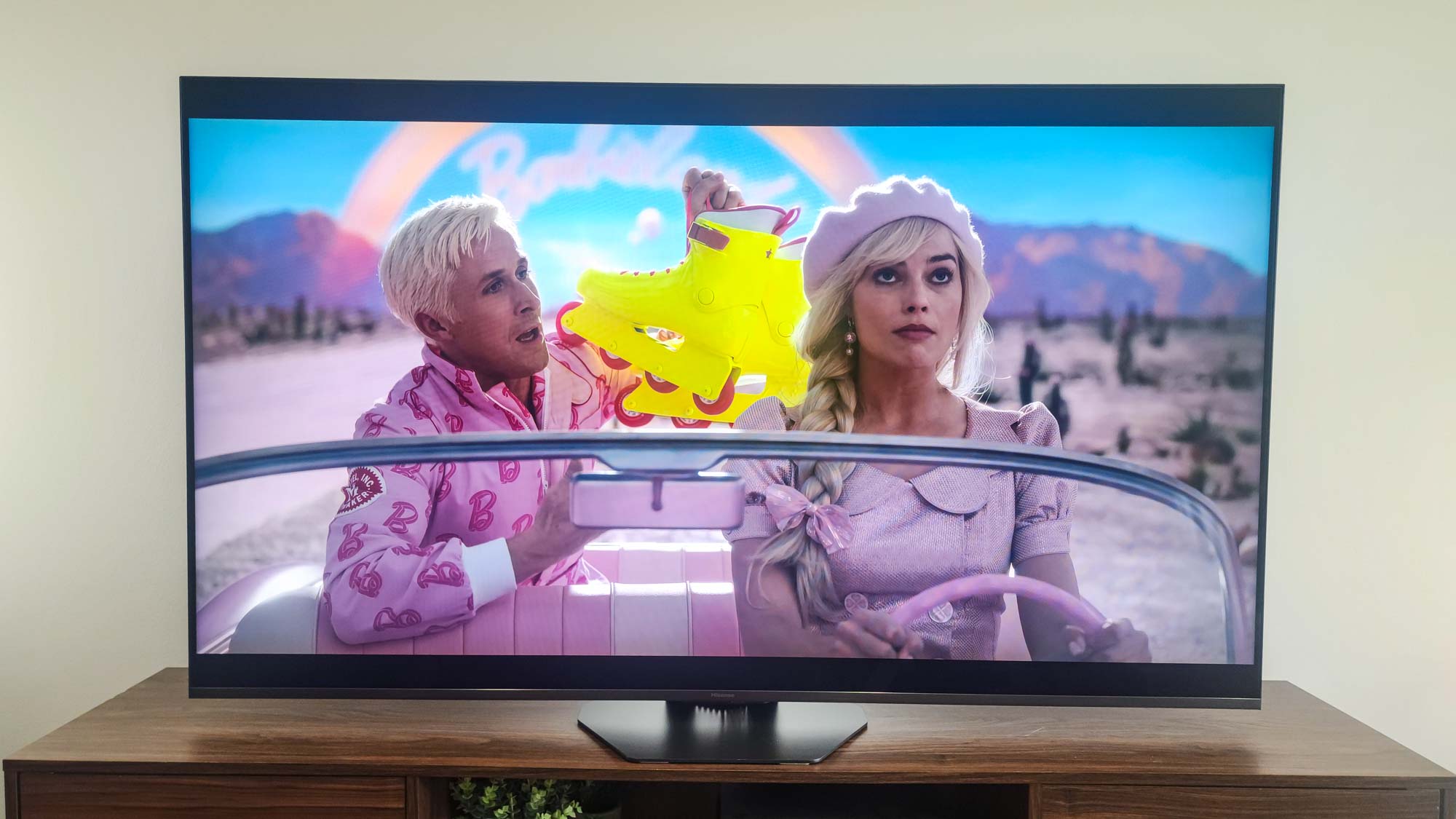
Historically, the Hisense U8 series has been known for its sensational brightness, and the U8QG keeps with tradition. In HDR, the U8QG delivers highlights as bright as 3,900 to 4,000 nits. Brightness isn’t the only metric that matters, but there’s no denying that this TV is far brighter than these competitors.
The U8QG also delivers excellent color volume. While the Bravia 7, QM7K and QN80F barely break 80% coverage of the Rec.2020 color gamut, the U8QG covers about 84%.

In Filmmaker mode, its out-of-the-box color accuracy is excellent, too. We measured a Delta-E of around 2.4, and anything under a Delta-E of 3 is considered imperceptible.
Hisense U8QG Mini-LED TV review: Gaming
Games also look great on the U8QG. This TV made those sweeping vistas as seen in Death Stranding look utterly spellbinding while VRR and ALLM makes console games on the U8QG run so much smoother compared to TVs without those features. Plus, AMD FreeSync Premium Pro does wonders for amplified screen tearing if you’re running a compatible AMD GPU.
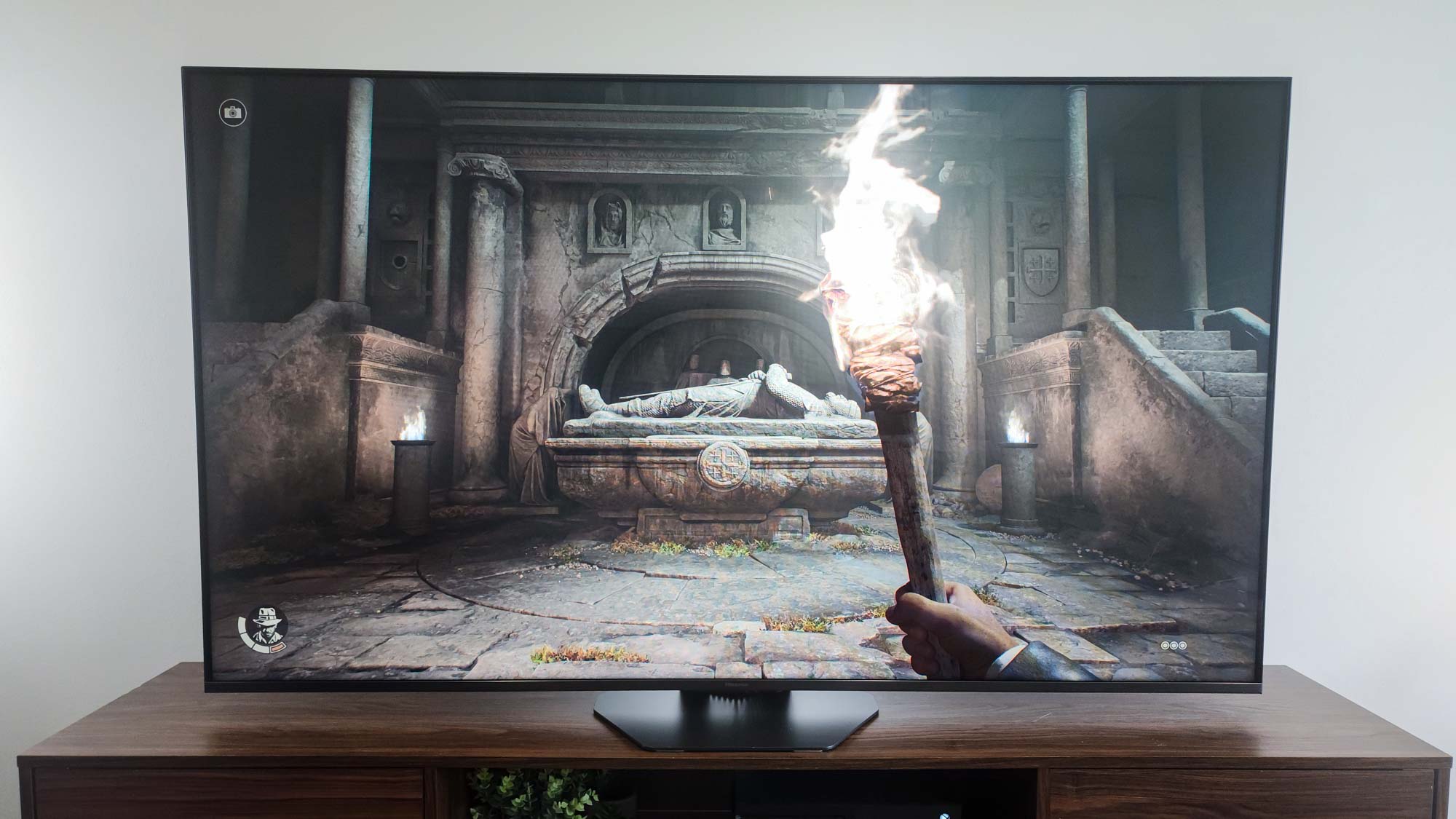
But the real fun was playing Armored Core 6 on my GT1 Mega Mini PC. While I could’ve used one of the three HDMI 2.1 ports, I opted to use the USB-C video output instead, allowing me to run games up to 144Hz in 4K. (While the Hisense U8QG supports 165Hz refresh rate, there’s few if any games that might hit that high unless you’re running a powerful gaming rig.)
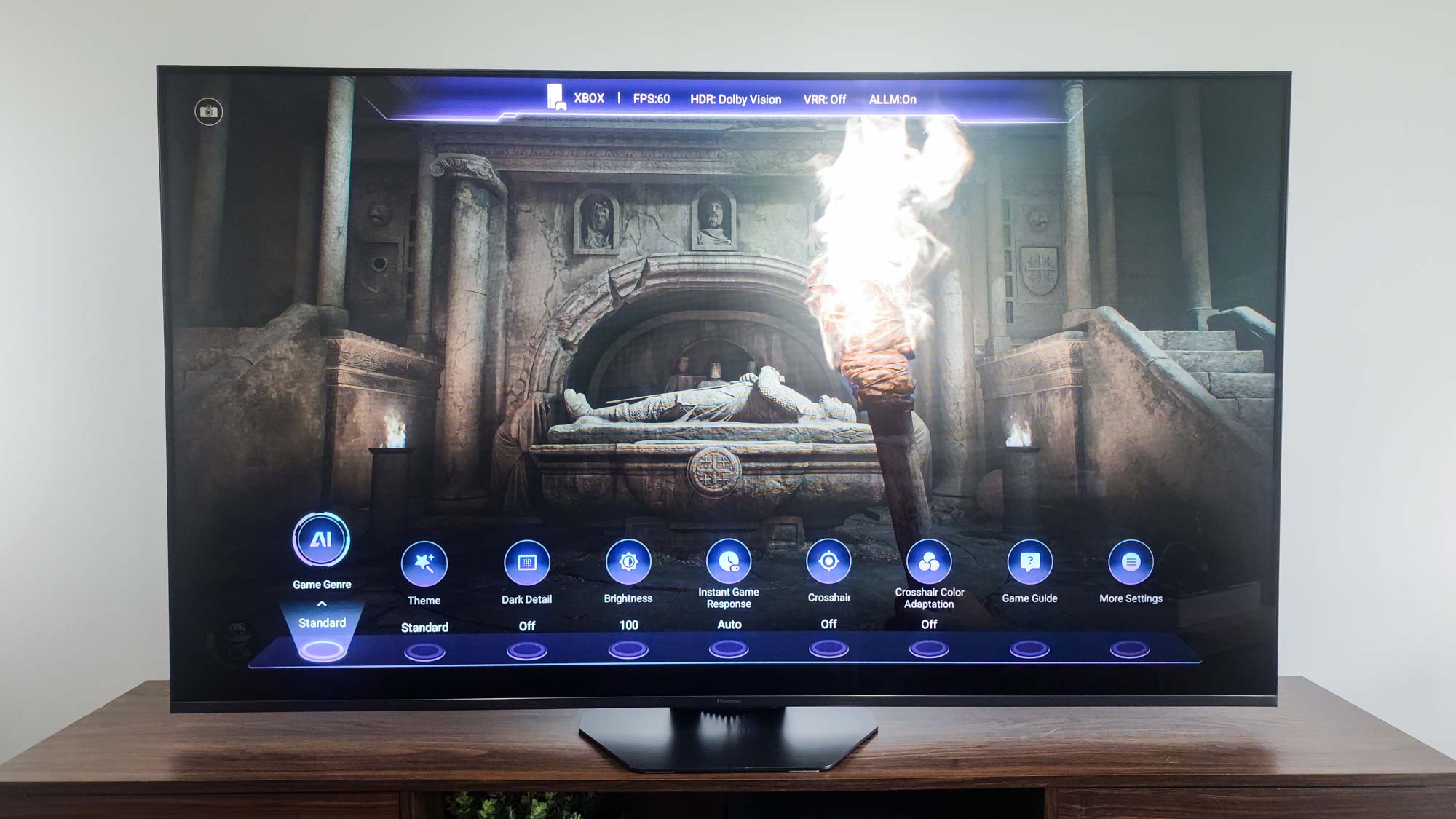
I also want to call attention to the Hisense U8QG’s in-depth Game Bar that lets you adjust all kinds of settings on the fly. It’s not quite on the same level as Samsung or LG’s versions, but everything is automatic and works as intended.
Hisense U8QG Mini-LED TV review: Audio
The Hisense U8QG has some serious speaker specs: 72W of power output on a 4.1.2-channel system and a 20W subwoofer. It doesn’t quite surpass the best soundbars, but it’s far better than the average pair of 10W speakers we see on most 4K TVs in 2025.
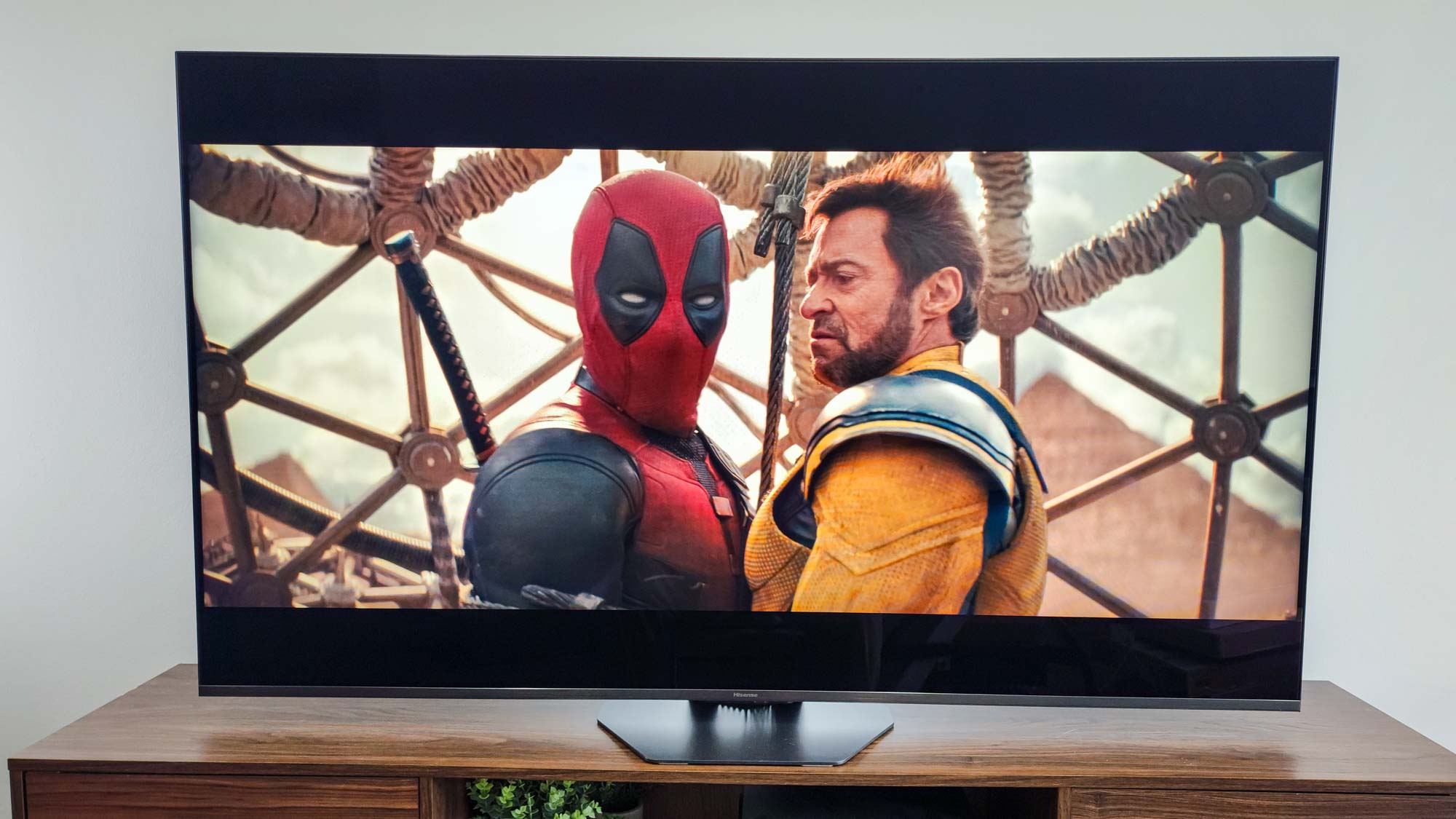
The Hisense U8QG also offers an AI-based audio enhancement called AI Sound. It modulates everything from dialogue to sound effects depending on your preferences, and it works quite well if you need it. It’s best if you have a larger room that doesn’t handle sound very well or is hard on hearing and strain to make out more subtle tones.
Dialogue could’ve been stronger, but overall I felt the U8QG has one of strongest audio systems of any TV I’ve reviewed in the last six months.
Hisense U8QG Mini-LED TV review: Interface and apps
For years, Hisense TVs have been built around Google TV, and this year’s U8QG is no different (that’s why there’s the “G” in its name).
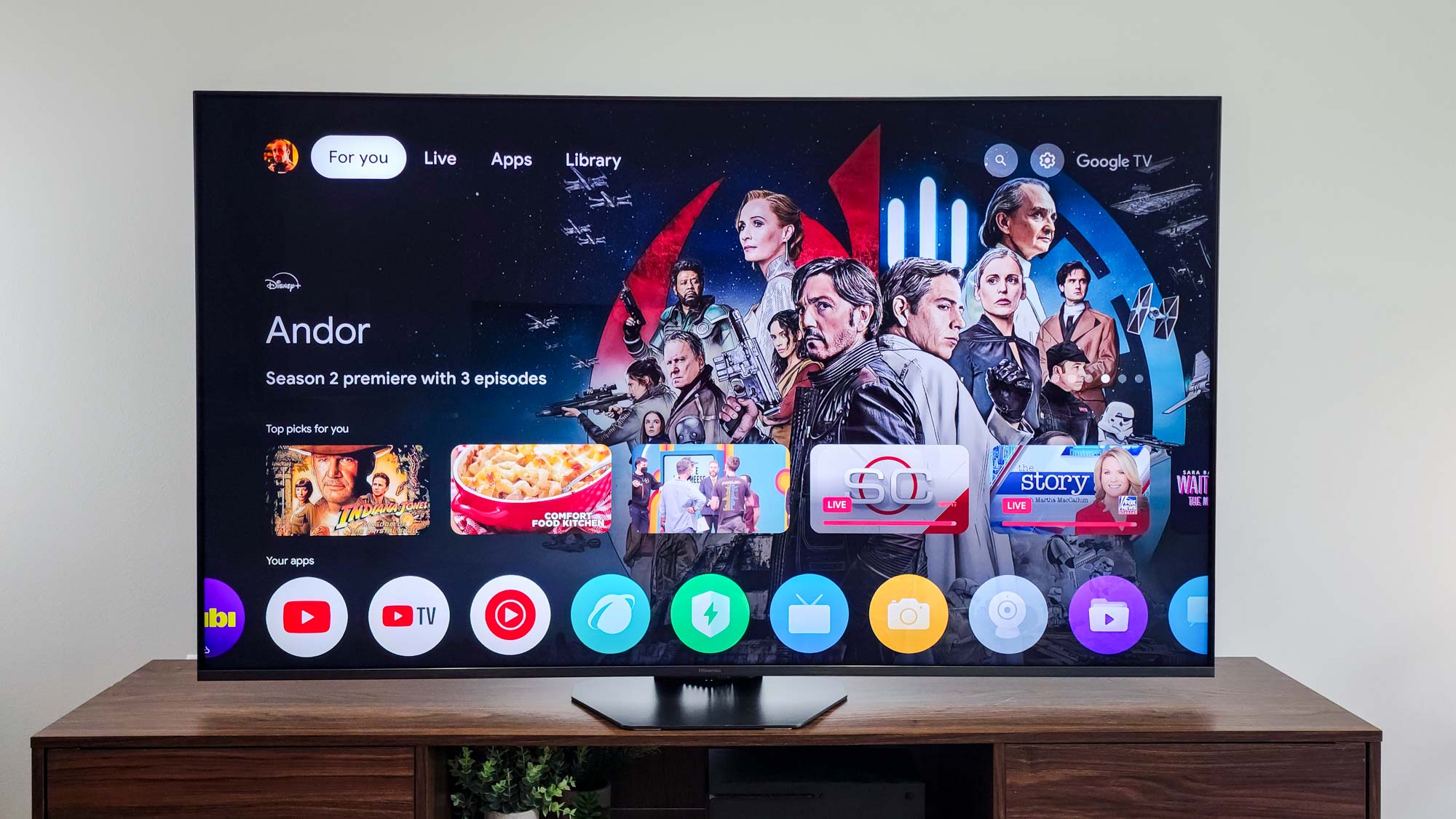
Google TV is relatively snappy on the U8QG, but I did notice some lag when pressing the system button for changing settings. Navigation is super simple, however, and Google TV features incredible search functionality.
Google TV is one of the best smart TV platforms due to its wide assortment of apps and many of the best streaming services. There’s even smart home functionality — though it’s not on the same level as you might get with the Google TV Streamer.
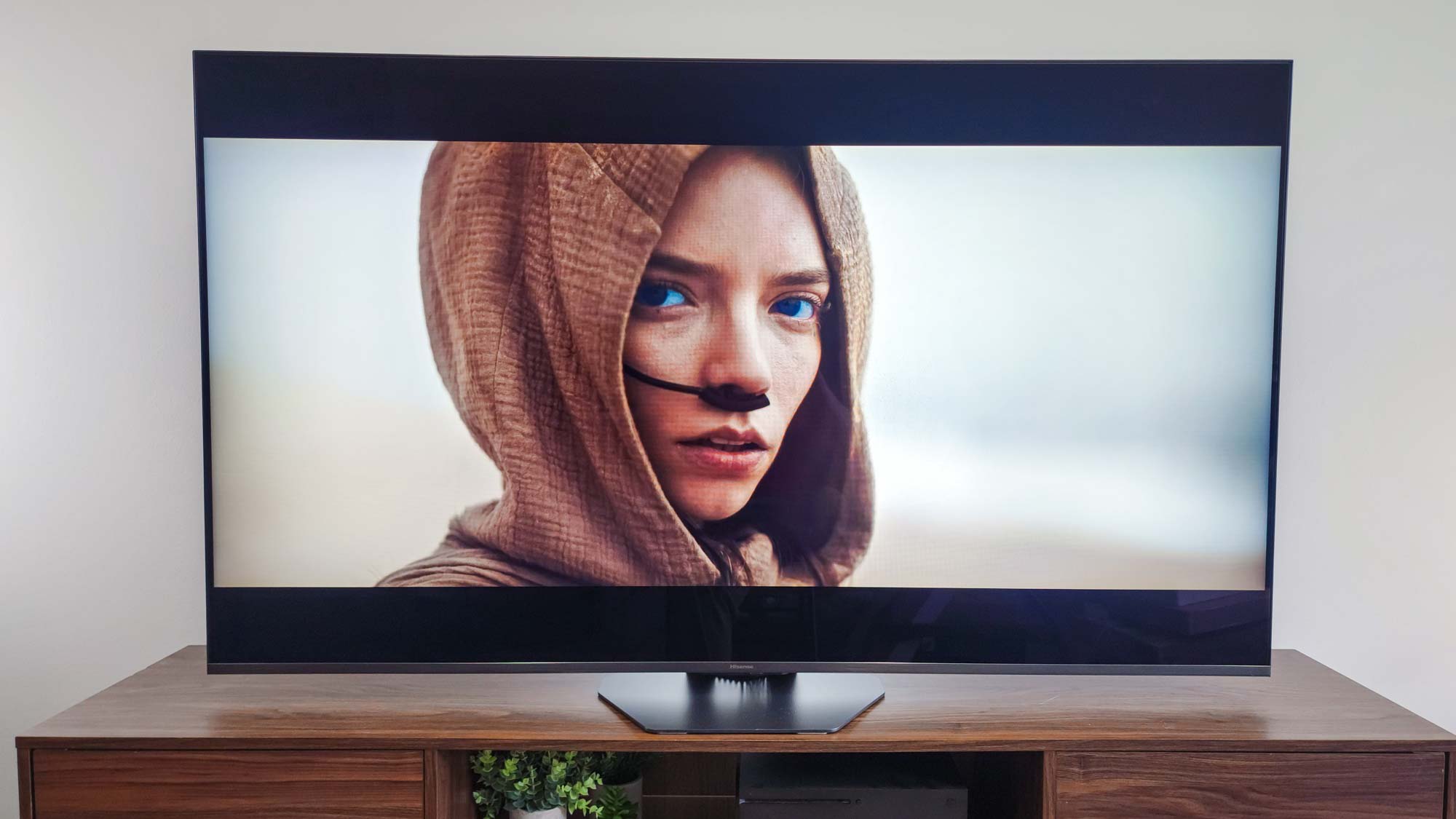
The only minor issue I have with Google TV is that it does miss the boat on key features, like cloud gaming platforms, which have begun to show up on Samsung’s Tizen and LG’s webOS-based smart TVs.
Hisense U8QG Mini-LED TV review: Verdict
The Hisense U8QG Mini-LED TV has a lot to offer, including high brightness, enhanced color, and a slew of gaming features. That’s not even mentioning the fact that the U8QG has one seriously powerful speaker system that rivals most soundbars.
But there are major rivals to consider, like the TCL QM7K. The TCL model is cheaper by about $200, but it loses out on several performance enhancements, like better brightness, input latency, and HDR color. Those metrics may not matter as much when you’re looking for the best TV under $1,000, however.
Despite some minor flaws in glare mitigation and off-axis viewing, the Hisense U8QG still makes for an outstanding display that offers up tons of value for the gaming conscious and HDR movie lovers.

Ryan Epps is a Staff Writer under the TV/AV section at Tom's Guide focusing on TVs and projectors. When not researching PHOLEDs and writing about the next major innovation in the projector space, he's consuming random anime from the 90's, playing Dark Souls 3 again, or reading yet another Haruki Murakami novel.
You must confirm your public display name before commenting
Please logout and then login again, you will then be prompted to enter your display name.

